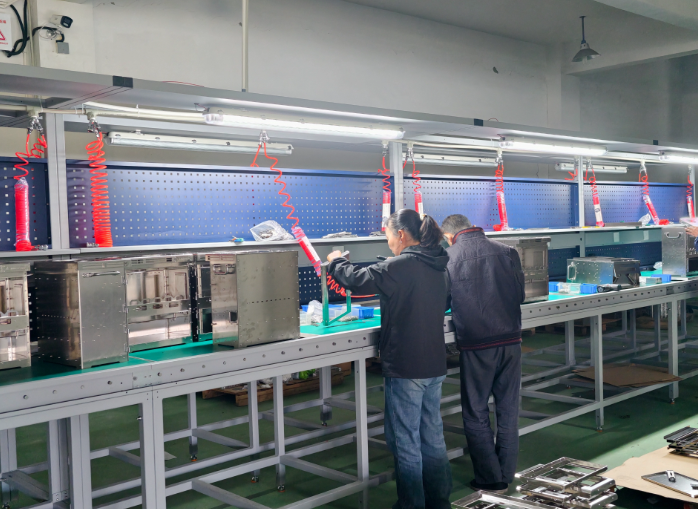With the development of human society and the advancement of science and technology, snack packaging bags, as an important part of food packaging, have also experienced an evolution from simplicity to refinement, and from roughness to fineness. This process not only reflects mankind's profound understanding and innovation of food packaging, but also reflects people's continuous improvement in their pursuit of quality of life. Sunkey packaging not only ensures that your snacks stay fresh and crunchy for longer, but also comes in a variety of unique styles to choose from.

The initial formation and characteristics of snack packaging bags
In the early days of human society, due to limitations in productivity and technological levels, the form of snack packaging bags was relatively simple. The earliest forms of packaging were mostly wrapped in natural materials such as leaves and animal skins, which were both crude and easily damaged. With the emergence of metal smelting and processing technology, metal vessels began to be used for food preservation, but due to their high cost, they could only be circulated among the noble class.
By the end of the 18th century, with the rise of the Industrial Revolution, the rapid development of machine manufacturing technology promoted the progress of the packaging industry. In 1828, the first glass blowing machine appeared in France, and glass began to be used for food packaging. Glass packaging has the advantages of being environmentally friendly, non-toxic, and recyclable, but its heavy weight and easy breakage limit its wide application. Despite this, glass packaging still brings new possibilities to the food packaging industry and lays the foundation for the subsequent development of packaging materials.
Development and diversification of snack packaging bags
With the continuous advancement of technology and the increasing demand for food packaging, snack packaging bags have begun to show a diversified development trend. In terms of metal packaging, tinplate, as a lightweight, easy-to-process, corrosion-resistant material, has gradually replaced traditional metal utensils and become the new favorite for food packaging. Especially during the World War, tinplate cans were widely used as military supplies, making canned food all the rage. However, problems such as iron materials being easy to rust and chemical coatings having high risks have gradually been exposed, posing a threat to food safety and quality.
At the same time, plastic is beginning to emerge as a new type of packaging material. At the beginning of the 20th century, plastic packaging began to be widely used in food, medicine and other fields. Its lightweight, moisture-proof, and drop-proof characteristics made it occupy an important position in snack packaging. However, problems such as poor barrier properties, non-environmental protection, and easy aging of plastic packaging have also attracted people's attention.
Refinement and innovation of snack packaging bags
Entering the 21st century, as people pay more and more attention to food safety and quality, the refinement and innovation of snack packaging bags have become an important direction for the development of the industry. As a new type of packaging material, aluminum foil has received widespread attention and application due to its high barrier properties, moisture-proof, fresh-keeping, light-shielding, corrosion resistance, non-toxic and tasteless properties. Aluminum foil packaging can not only effectively protect the safety and quality of food, but also improve the grade and taste of the product.
In addition, with the advancement of printing technology and design concepts, the appearance of snack packaging bags has become more and more exquisite and personalized. Packaging bags with rich colors and unique patterns can not only attract consumers' attention, but also convey the brand value and cultural connotation of the product.
Conclusion
The evolutionary history of snack packaging bags is a microcosm of the development of human society and technological progress. From the initial wrapping of simple natural materials, to the emergence of new materials such as metal and plastic, to the widespread application of high-performance materials such as aluminum foil, the form and function of snack packaging bags have continued to develop and improve. At the same time, as people continue to improve food safety and quality, the refinement and innovation of snack packaging bags have also become an important direction for the development of the industry. Environmental protection and sustainable development are important trends in the development of snack packaging bags in the future.
In the future, with the continuous advancement of technology and changing consumer needs, Sunkey packaging's snack packaging bags will continue to develop and innovate. We will be committed to producing more environmentally friendly, beautiful and practical packaging products to bring more convenience and beauty to our lives.
Sunkey
wxam.assistant@marketingforce.com

More Stories
Automotive Rubber Hose: Essential Performance Factors and Maintenance Best Practices
Is an EVA School Pencil Case the Smart Choice for Students Today?
Printing Small Functional Parts? Here’s Why Carbon Fiber PLA Resin Works Better